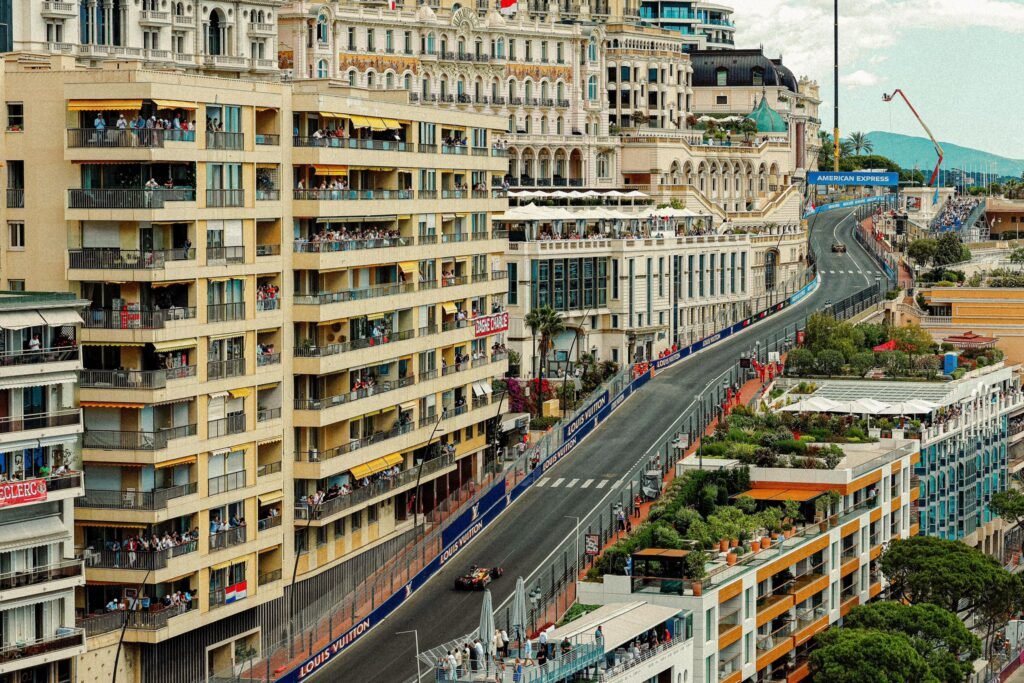The FP1 session of the Monaco Grand Prix followed the first race of the triple header in Imola last weekend. Charles Leclerc topped the timesheets, followed by Max Verstappen and Lando Norris.
The first free practice session set the stage for qualifying and the race, which will benefit from a new rule change this year: two mandatory pit stops must be made, and two different tyre compounds must be used.
Green flag in Monaco for the first free practice session
The opening minutes of FP1 in Monaco were eventful, with Charles Leclerc running off into the escape road after locking up his front right tyre on medium compounds. He managed to reverse and rejoin the track, marking the first of several expected off-track excursions.
All 20 drivers quickly took to the circuit, wasting no time in getting laps in. However, traffic became an immediate issue. Max Verstappen, on hard tyres like his team-mate, was forced to abandon a flying lap due to interference from another car.
Leclerc’s session took a further hit when he sustained front wing damage while attempting to return to the pits, scattering debris on the track. Lance Stroll was also seen going slowly behind him. Replays revealed that Stroll had moved aside to allow a car through but rejoined the racing line just as Leclerc arrived at speed.
The accumulation of debris prompted race control to bring out the red flags, halting the session temporarily so marshals could clear the track. All cars returned to the pits under red flag conditions.
Returning to race conditions
The replay showed Stroll moving aside for a Mercedes by pulling to the inside on the approach to the hairpin but then cut back across to retake the racing line, just as Leclerc arrived at speed behind him. The resulting contact left Leclerc’s front wing in pieces, while the extent of the damage to Stroll’s Aston Martin remained uncertain.
Following the red flag, the session resumed once the track had been cleared of debris. However, both Leclerc and Stroll initially remained in their respective garages, with Stroll stepping out of the car, indicating he was not expecting to rejoin the session soon.
As running resumed, Lewis Hamilton topped the timesheets with a 1m 14.576s on medium tyres, 0.155s ahead of Verstappen. With last year’s pole time set at 1m 10.270s, there was still plenty of lap time to be found as the track continued to evolve.
Leclerc was able to return to the circuit shortly afterwards, suggesting his Ferrari sustained only front wing damage. In contrast, Stroll’s car required a detailed inspection of the rear diffuser, rear wing, and floor, meaning he would remain sidelined for a considerable time.
Finally, some fast times
With 20 minutes of FP1 completed in Monaco and 40 remaining, Lando Norris led the timing sheets ahead of team-mate Oscar Piastri. Both McLaren drivers began the session on soft tyres, with Norris clocking a 1m 13.615s, a couple of tenths quicker than Piastri.
Liam Lawson had a close call with Lewis Hamilton, reporting over team radio that he “nearly hit Hamilton.” The Ferrari driver appeared to be backing off to find space for a flying lap, which caught the rookie off guard. This highlights how tricky traffic management can be around the tight Monaco streets, especially for less experienced drivers.
Aston Martin later confirmed that Stroll’s session had officially ended due to rear suspension damage and a gearbox change required after his earlier collision with Leclerc. A frustrating outcome, particularly at a circuit where track time is crucial.
Hamilton briefly returned to the top of the timesheets on medium tyres, edging ahead of his team-mate. However, Norris reclaimed P1 emphatically with a 1m 12.290s, over four tenths clear. Impressively, that lap came on a set of soft tyres already 14 laps old. This showed good durability from the C6 compound, despite track temperatures hovering around 37°C.
Final part of the session
Charles Leclerc voiced his frustrations over team radio, declaring “we are nowhere” as he complained of inconsistent handling. Despite his complaints, Leclerc remained second fastest at the time, just 0.193s off Norris on the same soft tyre. Carlos Sainz then made a minor error, having to reverse back onto the circuit. He sat fifth after switching to softs following an initial run on hards.
Though Leclerc had repeatedly predicted Ferrari would struggle at Monaco, citing the car’s weakness in low-speed corners, both Ferrari drivers looked competitive throughout the session.
Elsewhere, Norris ran straight on at Sainte Devote on a fresh set of mediums, Isack Hadjar clipped the barriers and returned to the pits for checks, and Piastri posted an improved lap time, also on mediums.
Leclerc ultimately set the fastest time of the FP1 session in Monaco with a 1m 11.964s.
Notably, five drivers—both Red Bulls, Bortoleto, Lawson, and the sidelined Stroll—had yet to run the soft C6 compound. Yuki Tsunoda was preparing to head out on softs as the session drew to a close, with Verstappen likely to follow suit. With the track now rubbered in, further improvements in lap times were expected.
The session came to an end
With five minutes remaining in FP1, Max Verstappen jumped to second on the C6 soft tyre, though he remained 0.286s adrift of Charles Leclerc, who continued to impress around his home circuit.
Norris held onto third place, followed by Albon and Piastri.
Verstappen made another push and improved his time slightly, narrowing the gap to Leclerc to 0.163s. Encouragingly for the teams, the C6 tyre showed strong durability even as track temperatures climbed to 41°C.
Final results
- Leclerc
- Verstappen
- Norris
- Albon
- Piastri
- Russell
- Sainz
- Gasly
- Hamilton
- Alonso
- Antonelli
- Hülkenberg
- Hadjar
- Tsunoda
- Bearman
- Ocon
- Lawson
- Bortoleto
- Colapinto
- Stroll



